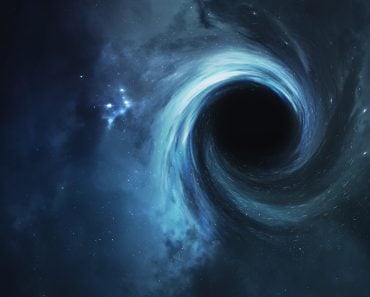Table of Contents (click to expand)
The area of gravity’s effect around planets, stars and black holes is spherical in shape because they pull equally in all directions.
This question has taken scientists on an incredible journey through theoretical physics and mathematical exploration. Currently, the most common belief is that black holes are spherical due to gravity and the laws of physics. However, it does make one wonder about the possibility of black holes with different shapes that have not been explored yet.
The conventional idea in astrophysics is that black holes are spherical. This is because gravity pulls everything towards the center of mass, forming a sphere. This idea also applies to black holes’ event horizons, at least in a universe with three dimensions of space and one of time. This is what we similarly observe in planets and stars, as molecular clouds of gas and dust accumulate towards the center, forming a core.
However, in the world of theoretical physics, things have evolved. The possibility of dimensions beyond the known three dimensions of space and one of time has been introduced. In these extra dimensions, physicists are now considering whether black holes could have different shapes.
Recommended Video for you:
Exploring Higher Dimensions
Scientists, especially theoretical physicists, are curious about the universe’s basic nature. They have come up with the idea that there might be more than just the three spatial dimensions we know (up-down, left-right, forward-backward), along with the dimension of time. These extra dimensions, even though we can’t see or touch them, could have serious effects on how things work in space.

In these extra dimensions, the usual rule that black holes are spherical might not be entirely true. Scientists have been using math to figure out what shapes black holes might have in these extra dimensions, and guess what? They’ve found some interesting possibilities. Maybe black holes can have different shapes than we have always thought.
Black holes not being round in shape is a new way of thinking about the universe, even though it doesn’t have any direct real-world effects right now. It’s like opening a door to new possibilities in our understanding of space.
Particle Physics And The Theories It Includes
This field isn’t just theoretical science; it also presents the exciting possibility of real-world discovery. Particle physicists have considered the idea that microscopic black holes could be produced by generating high-energy collisions within particle accelerators. If we could detect these tiny black holes during their brief existence, it might offer evidence for the existence of higher dimensions in our universe.

This intersection of theoretical physics and experimental science is fascinating. Our understanding of non-spherical black holes, while still theoretical, might someday become a reality. In this ongoing search to understand black holes, we are not merely expanding our knowledge of black holes, but also pushing the boundaries of our understanding of the universe itself.
For a long time, experts have assumed that black holes are spherically shaped. However, our exploration of higher dimensions and the mathematical revelations regarding non-spherical black holes encourage us to rethink our cosmic beliefs. Although these theoretical findings may not have direct implications for the real world (yet), they open up a world of possibilities that could change our understanding of the cosmos.
Mathematics For Non-spherical Black Holes
For more than 20 years, scientists have known that not all black holes are spherical, especially in higher dimensions. Recent work in theoretical physics has shown (through math) that black holes existing in dimensions beyond the usual three can have various shapes. This is quite different from what we’ve always thought about these mysterious, star-eating objects.

This discovery is based on the math created by Albert Einstein. He developed equations that help us understand how space and time curve around supermassive objects like black holes. In simpler terms, these equations tell us what the shape of a black hole looks like. In normal dimensions, there are round black holes, but in higher dimensions, things get more interesting and complicated.
As we continue our scientific exploration of the cosmos, the perspective people have on black holes, gravity, and the structure of the universe keeps evolving. The search for non-spherical black holes is evidence of the curiosity we humans hold for the most mysterious objects in the Universe. Whether or not these unique shapes exist in the universe, the journey to understand and unravel the mysteries of black holes will undoubtedly lead to more astonishing discoveries in the future.
Summary
The question of why we assume black holes are spherical in shape has taken us through theoretical physics and mathematical exploration. While our current belief in spherical black holes is based on gravity and the laws of physics, we’re now considering the possibility of non-spherical black holes in dimensions beyond our perception. This exciting idea challenges our preconceptions and encourages us to keep pushing the boundaries of our knowledge. Black holes may yet reveal more of their intricate and mysterious designs in the grand tapestry of the universe, reminding us that the cosmos is a stage for endless discovery and exploration.












